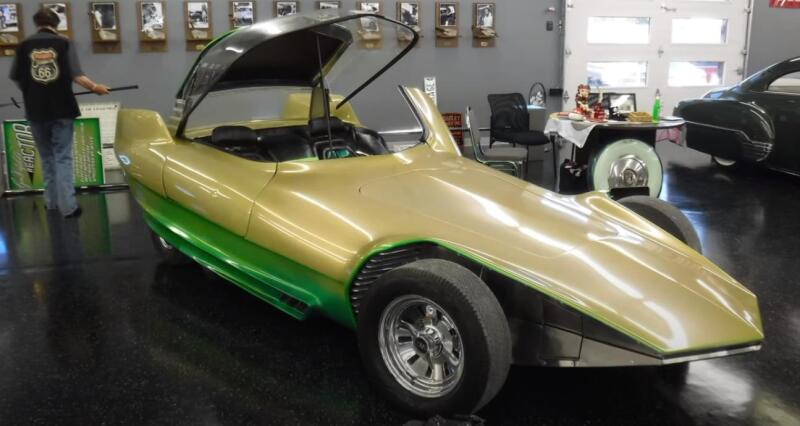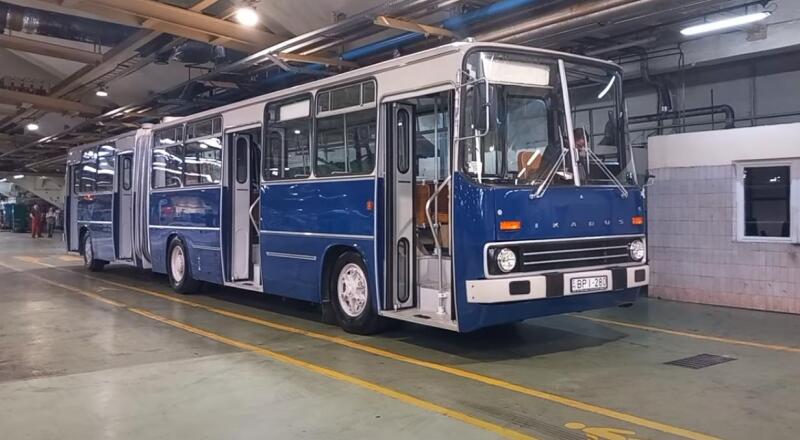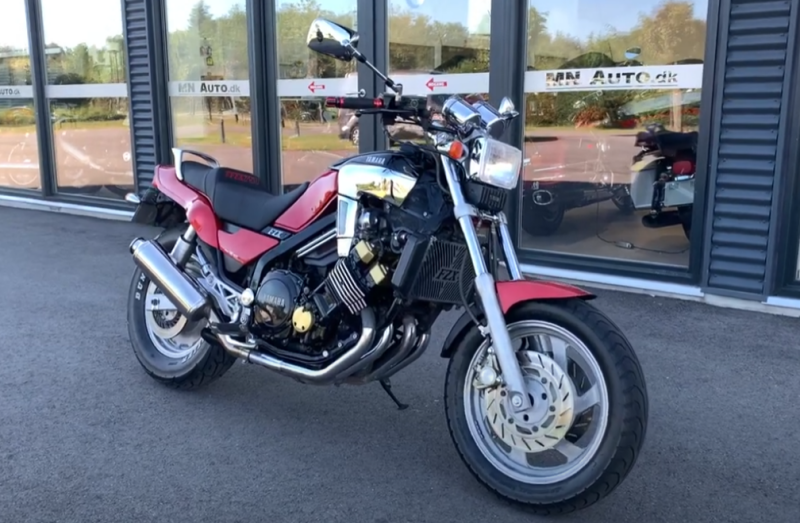This decade also marked the evolution of the hot rod movement. It was during this time that both experienced major companies and bright young talent developed some of the most legendary custom cars of all time.
 The design of the “Reactor” was borrowed from the cult cartoon. Photo: YouTube.com
The design of the “Reactor” was borrowed from the cult cartoon. Photo: YouTube.comAmong the legendary designs that originated in the sixties, perhaps the most exciting and futuristic was the Reactor.
Birth of a legend
Gene Winfield was born June 16, 1927, in Springfield, Missouri, and his family moved to California when he was two years old. Growing up in the Sunshine State, Winfield witnessed the birth of the hot rod movement and was simply in love with cars. This determined his future fate - he became a direct participant in this epochal period of time in the evolution of the automobile industry.
He began implementing his projects in the 50s, opening a private workshop. Just ten years later, Winfield gained great popularity in his homeland, including thanks to the futuristic “Reactor”.
The legendary custom, originally called the Autorama Special, was built in 1965 by order of a certain Joe Kizis, who was the organizer of the annual custom car show in Hartford.
 This is what the Reactor looks like from the rear. Photo: YouTube.com
This is what the Reactor looks like from the rear. Photo: YouTube.comMany experts perceive the obvious similarity of the Reactor with cartoon vehicles from the then very popular animated sitcoms “The Jetsons” and “The Flintstones”, which were just released in the early 1960s. In both series, characters rode flying cars with aggressive fins and lights. Apparently, these animation masterpieces became the mainstay of Winfield’s inspiration in his work on “The Reactor.”
As soon as he received the deposit from the customer, he immediately sketched out the image of the future show car. But it should be noted that the final design was entrusted to Ben Delphia, who was a graduate of a specialized college.
Winfield assembled the body by hand, from aluminum panels using gas welding. The model received a glass folding dome over the interior and doors that were made in the shape of a swan wing. All parts were controlled using electric drives.
In its shape, the car still looked more like a spacecraft than a traditional hot rod. It was distinguished by a very elongated and low “nose” and a more raised short “tail”, which also almost completely hid the rear wheels.
Inside, hidden under a transparent dome, everything was also like in a favorite cartoon - two bucket seats covered in leather, a dashboard stuffed with electronics and an original Ford steering wheel in the Wrist-Twist style with pistol grips.
Independent suspension and the most atypical Chevy engine
The move with the choice of the base chassis for the Reactor turned out to be very unexpected. The creators decided on the basis of the vehicle serial Citroen DS. Despite some modifications, the “Frenchman” still has subframes and an improved fully independent hydropneumatic self-leveling suspension.
Thus, the vehicle's ground clearance could be changed by raising or lowering the body at the touch of a switch. The height adjustment range was 4-9 inches (101-228 mm) above the ground. This suspension provided a fairly smooth ride, even though the main purpose of this masterpiece was simply to participate in the show. The three-speed automatic transmission was also borrowed from the DS, but the transmission was already working in tandem with the six-cylinder power unit from the Corvair Corsa, and not with the French engine.
With this move, Winfield was able to achieve maximum power for his car and at the same time a low landing. An optional turbocharged version was used. The engine was not modified and produced 180 horsepower.
the main role
Work on the new show car lasted less than a year, and in 1965 it was presented at the Autorama exhibition, which was held in Connecticut. Naturally, it attracted attention, and not only due to its original design, but also due to the color of the body. It was a special paint called Winfield Fade, combining metallic shades of gold and green.
After this event, the car received several more invitations to similar auto shows, and became recognizable under the name Reactor. In 1966, the car even won an award at the prestigious Grand National Roadster Show in California.
 This is the unusual steering wheel in the Wrist-Twist style that the Reactor received. Photo: YouTube.com
This is the unusual steering wheel in the Wrist-Twist style that the Reactor received. Photo: YouTube.comHowever, such popularity was not enough for the author of the futuristic brainchild, and he decided to break into the dream factory at all costs. It cannot be said that Hollywood accepted him with open arms, but at some point luck smiled on Winfield in the form of an interesting offer from 20th Century Fox.
Reactor got a role in the fantasy comedy series Bewitched, which became a springboard for a future successful career in the film industry. After that, Reactor got Batman, Mission: Impossible, and other contracts. And during this time, Winfield created several more original copies for cinema, including Galileo for the science fiction series “Star Trek”, “Spinners” for “Blade Runner”, etc.
Rebirth of a legend
Despite the fact that Gene Winfield seemed to have full control of the Reactor and was directing its advertising campaign, Joe Keysis remained the owner of the car. The car returned to him after the end of his Hollywood career.
 Today, “Reactor” appears from time to time at auto shows. Photo: YouTube.com
Today, “Reactor” appears from time to time at auto shows. Photo: YouTube.comIt is not known for certain whether the owner later changed, but at some point it turned out that the Reactor was not in the best condition, and even rusted. But Winfield did not let his favorite work sink into oblivion, he found and restored it. This was in the late 1990s, just in time for the fiftieth anniversary of the birth of the Grand National Roadster Show. Since then, this rarity periodically appears at auto shows across America.
And although few people know this amazing story, the Reactor is still as impressive today as it was six decades ago, and definitely deserves us to tell you about it.










